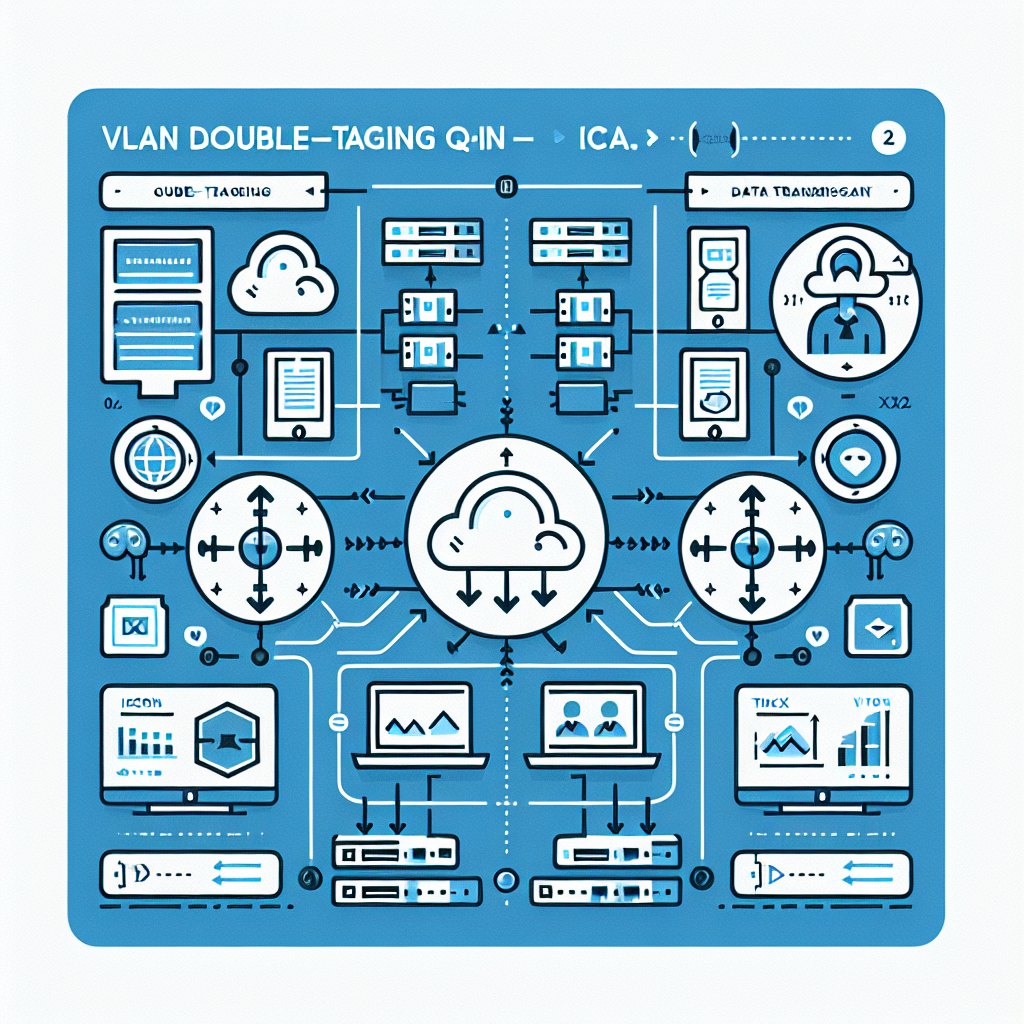
VLAN double tagging (often called Q-in-Q) wraps a customer’s VLAN inside another VLAN so service providers can carry many tenant networks across a shared backbone without losing each customer’s internal VLAN IDs.

Double tagging lets carriers and large networks extend VLAN segregation beyond the 4096 ID limit by stacking an outer VLAN on top of an inner customer VLAN. It’s common in multi-tenant data centers and service provider architectures because it preserves each tenant’s VLAN numbering while moving traffic across a shared transport.
In normal VLAN operation there’s a single 802.1Q tag per frame. Q-in-Q adds a second tag so the network can carry a customer’s internal VLANs intact while the provider maps traffic with its own outer VLAN. The outer tag acts as a carrier identifier; the inner tag stays customer-specific.
The main advantages are increased scalability and clean tenant separation on a single physical network. It reduces the need for many isolated backbones and simplifies routing for providers. You also get better management for large campuses and can avoid VLAN ID conflicts between multiple customers.
Double tagging adds configuration overhead and can complicate troubleshooting because frames carry extra headers. It may also push Ethernet frame sizes past standard MTU limits, requiring jumbo frame support. Finally, misconfigurations are easier to make and harder to detect at scale.
Attackers can use crafted frames with tags arranged to confuse improperly configured switches and gain access to isolated VLANs. A double-tagging attack typically manipulates the outer tag so downstream switches pop it and then forward the frame into a different VLAN. This can allow lateral movement or data exfiltration if controls aren’t in place.
Preventive settings include trunk port restriction, limiting which VLANs can be carried, and dropping frames with unexpected tag sequences. Enforce strict ingress/egress VLAN mappings and use access ports for endpoints wherever possible. Also disable VLAN stacking on ports that don’t need it.
Because Q-in-Q adds bytes to each Ethernet frame, verify that every device in the path supports the larger size or enable jumbo frames. If one hop drops oversized frames, packets will be lost or fragmented. Test the full path and adjust MTU consistently to avoid intermittent failures.
Yes — most production deployments rely on carrier-class switches and routers that explicitly support stacking 802.1Q tags. Commodity switches may not handle nested tagging reliably or may lack the visibility tools needed to audit tag handling. Choose devices that report per-tag behavior and support debug features for VLAN processing.
Implement flow monitoring and VLAN-aware packet capture on aggregation points so you can spot unexpected tag patterns. Alert on anomalies such as unknown outer VLANs or sudden increases in frames with multiple tags. Regularly review switch logs and run tag-consistency checks during maintenance windows.
Adopt a whitelist model: only enable required VLANs and explicitly map customer VLANs to provider VLANs. Apply strict port profiles, disable unnecessary protocols, and use separate management VLANs for device control. Keep documentation up to date and use automated checks to validate VLAN mappings.
Troubleshooting requires awareness of both tag layers; tools and packet captures must show inner and outer tags to be useful. Engineers should correlate tag information with routing and MAC tables to find where a frame was mis-handled. Include tag-aware tests in your runbooks for faster resolution.
For practical guidance and tools tailored to email and network security, visit Palisade’s learning center at Palisade. That hub aggregates guides, assessments, and utilities for securing network and communications infrastructure.
Yes. If switches improperly process the outer tag, an attacker may craft frames that are forwarded into a target VLAN after the outer tag is removed. That’s why port hardening and VLAN whitelists are essential.
No. While common with carriers, large enterprises and data centers also use it to keep tenant or departmental VLANs separate without deploying many physical networks.
Q-in-Q doesn’t multiply the number of VLAN IDs beyond 4094 per tag, but stacking lets providers map many customer VLANs onto provider tags, effectively enabling more isolated tenant spaces across a shared backbone.
Not entirely. Jumbo frames address MTU issues from added tags but won’t prevent misrouting or tagging attacks; combine MTU changes with policy and port controls.
Start by auditing trunk ports and removing unnecessary tag permissions, then enforce explicit mapping between customer and provider VLANs. Follow up with monitoring to validate behavior under load.